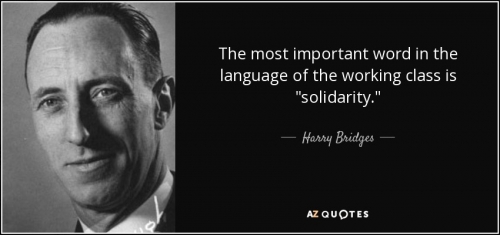Life Writing

Michael Jarvie introduces a new section of our website, on Life Writing
My collection of working-class life writing, Into the Silence, has a Dewey Decimal Classification of 828 in my local library. So that means it falls into the category of English: Miscellaneous Writings. That’s a start I suppose, though it hardly provides the curious reader with any clear indication as to what life writing might actually be.
As I explain in the introduction to my book, the individual pieces are all based on actual events, real people and real places. It’s therefore a work of non-fiction and incorporates elements of memoir, reviews of films and theatre productions, letters and blog posts. Given its autobiographical nature, it’s written in the first person, though I do sometimes employ the second person – you – for the sake of variety.
Life writing is merely a new-fangled set of words for a kind of writing which stretches all the way back to St Augustine’s Confessions. So, is it simply another way to describe a full-length autobiography, such as the aforementioned work? Not necessarily. Although a piece of life writing might conceivably expand into a book, it can also manifest itself as a much shorter work, or a series of such works. See, for example, that undisputed masterpiece of sixteenth century French literature – Michel de Montaigne’s Essays.
In England the Elizabethan and Jacobean periods were a golden age for would-be wordsmiths such as Thomas Nashe and Robert Greene. A few years later, during that period in our history which Marxist historians refer to as the English Revolution (1640-1660) there was yet another explosion in terms of religious and political tracts. Everyone, it seemed, wanted to be a pamphleteer in those days. Radical thinkers such as the Leveller, John Lilburne, and the Quaker, James Naylor, together with an army of Ranters and Diggers were all keen to have their say about how they envisioned a future society, especially one based on more egalitarian principles. But by doing so, they also gave us a remarkable insight into their everyday lives.
This is particularly relevant for us today since it demonstrates how the working class can access the arena of literature through alternative and subversive routes. The end of the seventeenth century also culminated in what is perhaps one of the most well-known examples of life writing, namely Samuel Pepys’s Diary.
In more recent times, with the emergence of the monolithic publishing houses, the scope for working-class self-expression has been severely curtailed. Life writing, however, continues to offer another outlet for those of us who have been excluded by the gatekeepers. Life writing is also a remarkably open and inclusive form. For some people the exploration of memory and the events of one’s own life can have a genuine therapeutic effect. Moreover, if you find that your work is rejected it can provide you with an opportunity to channel your energies in a different direction. It is, after all, the sort of thing that you could quite easily publish on a blog, for instance.
As a way to salve its guilt, the mainstream publishing industry has been making all the right noises recently about taking steps towards greater inclusivity and the like. In response to pressure from underrepresented writers, two collections of working-class life writing have appeared in the last few years, albeit as a result of crowd-funding schemes. The first of these is Know Your Place, edited by Nathan Connolly and published by Dead Ink Books in 2017. The second is Common People, edited by Kit de Waal, which was published by Unbound in 2019.
Get writing!
My own introduction to life writing came about when I was studying for an MA in Creative Writing at Teesside University between the years 2014-15. Having been advised to keep a notebook with me at all times to jot down ideas, some of the first material that was committed to that notebook found its way into one of my life writing works – “Language Games and Liminal States”.
For the final piece in the life writing section of Into the Silence I decided to undertake a nostalgic trip to Saltburn-by-the-Sea. However, when I arrived at Darlington railway station with a new notebook in my pocket, there were two conflicting emotions tugging at me. The first was a palpable sense of apprehension, bordering on terror. Allow me to explain. Since I’m a purist when it comes to my own life writing – in other words I don’t make anything up – it means that I’m completely at the mercy of events, which for someone who likes to be in control can be an unsettling feeling. Despite that initial sense of dread, the second emotion was one of sheer exhilaration. Because I didn’t know what was about to occur when I embarked on this particular journey, that made it all the more exciting.
Just because I’m a purist when it comes to being faithful to the events of my life doesn’t mean you have to be. The beauty with life writing is that it can be whatever you want it to be. The real skill, of course, is shaping the material and giving it a satisfactorystructure. But if you’re a writer that’s something you should be familiar with already.
So what are you waiting for? Get writing! For inspiration here are twelve works to explore, all of them splendid examples of life writing:
Saint Augustine Confessions
The Book of Margery Kempe
Michel De Montaigne Essays
Daniel Defoe A Journal of the Plague Year
Jean-Jacques Rousseau Confessions
The Diary of Anne Frank
Harry Pearson The Far Corner
Simon Garfield The Wrestling
Stephen Kuusisto Planet of the Blind
W.G. Sebald The Rings of Saturn
Lynsey Hanley Estates
Kerry Hudson Lowborn

Michael Jarvie
Michael Jarvie is a working-class writer from Darlington in County Durham. He is the author of The Prison, a collection of short stories, and Black Art, a novel.
